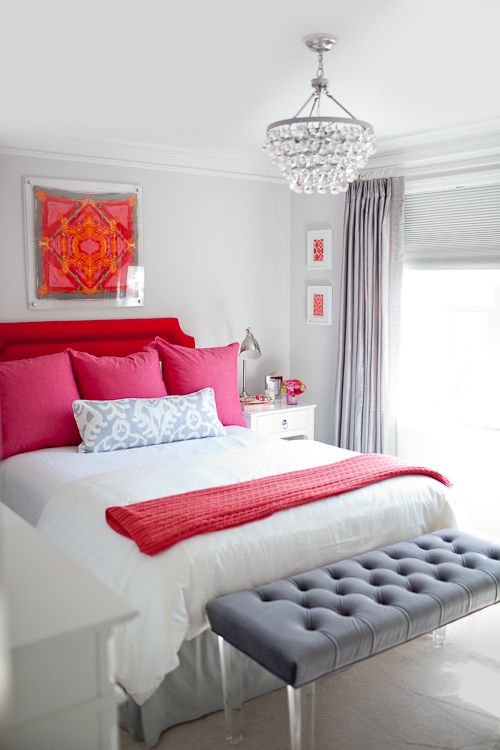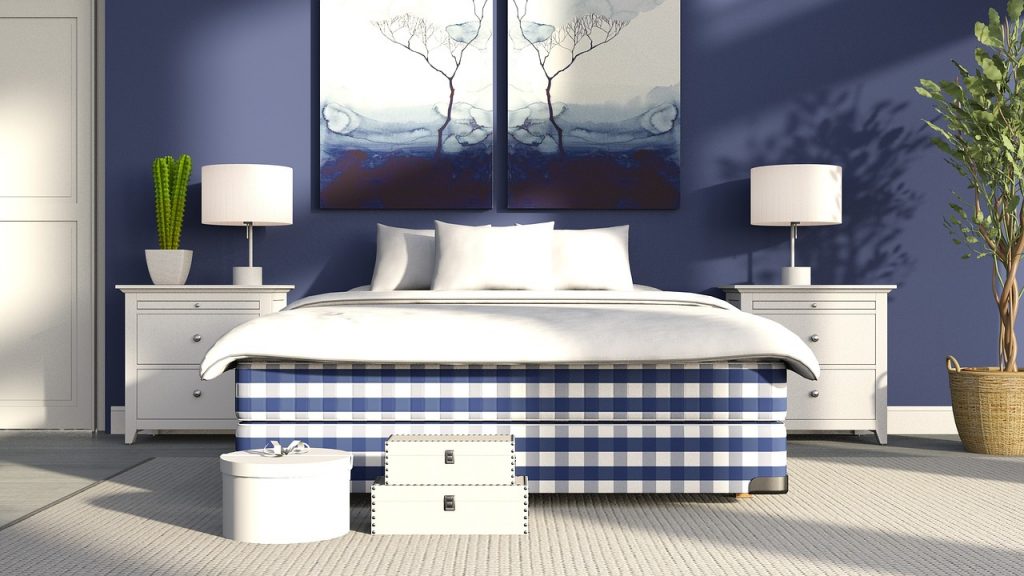Using colors in interior decorating the home reveals a lot about who we are. Knowing something about color theory can help you make good color choices that will create the look you want in your home.
1. Colors Reveal Personalities
You may already be aware that there are links between people’s preferred colors in interior decorating and certain personality traits. Numerous studies have been done on the topic, but if you take a look around your home or through your wardrobe. You may notice certain colors popping up again and again. This isn’t necessarily something on which to base your whole design, but it’s a fun exercise to get you thinking about how your personality is reflected in your surroundings (and isn’t that, to some extent, what good interior design is about?) Here are some colors and their associated personality traits:
- Red — active, cheerful, optimistic, goal-oriented
- Blue — cautious, peaceful, orderly, values tradition
- Green — loyal, sincere, well-mannered, good at seeing the big picture
- Yellow — exciting, self-sufficient, dreamer, prone to worry
- Brown — practical, enjoys the simple life, good at accomplishing tasks
- Orange — energetic, extroverted, loves freedom
- White — confident, perfectionist, sincere
- Black — serious, decisive, powerful
- Purple — comforting, values dignity
What do you think? Does your personality fit your favorite color?
2. Colors Affect Mood
Just as colors are associated with personalities, they also reflect and inspire certain moods. Warm colors, such as red, yellow, and orange, will make a space feel energetic or lively.
Cool colors, such as blue, green, or light purple, will create a restful, calming feeling. Consider the activity in the room — is it an area where you will entertain or place to relax? Also remember that balance is very important; if you use too much of a color, it will become overwhelming, so pops of neutral colors like black, grey, brown, or white are important in a space as well.
3. Colors Can Fool the Eye
Most people have a space in their homes that they wish was bigger. While you may not have the budget or desire to move to a more luxurious home with oodles of space in every room, you can use color to change your perception of how large the space feels. This is especially true if you employ an interior designer who is a color expert. They can help you utilize every trick for making a small space feel larger. If you have a small space, paint the walls and ceiling a lighter shade. Such as a pastel. Choosing furniture that is a similar color to your walls can also help make a space appear larger.
If you’re fortunate enough to have a large space, use a bold color to add interest and attract the eye.
4. Colors Finish a Room
At one time or another, we’ve all seen a room that felt a little empty. A feeling of something missing. Chances are, there was a lack of using color in your interior decorating. Color is the unifying element that pulls a space together. A designer can easily guide you to making smart color choices that will result in a room that looks finished, but if you are looking to add a few things such as pillows or accessories to a room, or you’re an ardent DIY-er, there are a few tips that can help you make smart choices.
The 60:30:10 Rule
When decorating a room with color, use the following percentages to have a good balance of color:
60% dominant color
30% secondary color
10% accent color
In the room sense, that translates roughly into
60% of the room’s color are the walls
30% of the room’s color is the upholstery
10% of the room’s color is in accent pieces
Take a tip from Mother Nature‘s Colors
Many people make mistakes not so much with color in interior deco
, but with value (the relative lightness or darkness of a color, say lavender vs. eggplant). If you end up with too many dark values of color on one side of the room vs. light values on the other, your room will feel unbalanced. The natural world can help guide you towards creating a balanced space. Choose darker values of color for the floor (like the ground outside), medium values for the walls (trees, shrubs, etc), and light values for the ceiling (sky), thus creating a vertical color design that will help you avoid lack of balance.
The Leading Piece
If you read last week’s blog, you’ll know what the lead piece is. (However, if you didn’t, scroll right on down and read it, I’ll wait!) Say you have an item in your room already that works as a lead (a duvet, piece of art, accent pillow, etc), pull colors and values from what you have. This is also much easier than painting and then trying to find things to go with it later.
Colors, and more specifically, the undertones of colors that show up popularly in stores, fashion, fabrics, etc, change over time. Think of how yesterday’s colors differ from those you see around today — blues, greens, yellows, etc, but in the case of the 80’s, for instance, all the colors shared a blue undertone, hence mauve (red with blue undertones) or sea foam (green with blue undertones). Today, we’re seeing a lot of grey or beige undertones in the popular colors. If you still have a carpet or wallpaper in your home from that era, you’ll have already realized how hard it can be to try to match something to it when the colors with the right undertones are no longer popular.
A Color expert Goes a Long Way
There are plenty of other aspects of color theory to consider when using color in interior decorating. If you’re intrigued and want to know more, check out “Why Our Brains Love Colorful Interiors”, or “Top 10 Tips for Adding Color to Your Space”. If, however, you find using color in interior decorating all a bit overwhelming and are concerned about getting it right, get in touch with a designer who can save you a lot of time and money, teach you a bit along the way, and help you achieve the very best look. As we all know with other things in life, there are times when the rules can and should be broken, and a color expert like a designer has the expertise to help you discern when breaking the rules can result in something truly breathtaking.
If your walls could talk, what would they say about the color choices you’ve made? What do they say about who you are?
This post is a collaboration and may contain relevant affiliate links. All opinions are our own and for informational purposes.


